13 June 2024 : Daily Current Affairs
1. Study ranks India second in nitrous oxide emissions
- 1. Study ranks India second in nitrous oxide emissions
- 2. Four new studies report progress towards long-awaited HIV vaccine
- 3. India Detects Second Human Case of H9N2 Bird Flu
- 4. Karnataka, Maharashtra, and Goa Seek Reduction in Eco-Sensitive Areas in Western Ghats Amid Development Concerns
- Prelims Facts
- 1. Physical Research Laboratory scientists find three new craters on Mars surface
- 2. Lok Sabha session from June 24; new MPs to take oath, elect Speaker
- 3. World will amass ‘major’ oil surplus by ‘30: International Energy Agency
- 3. Satnami Sect Protests Alleged Desecration, Sparking Unrest in Chhattisgarh
(Source – The Hindu, International Edition – Page No. – 6)
| Topic: GS3 – Environment – Environmental pollution and degradation |
| Context |
|
Nitrous Oxide (N2O) Emissions Overview:
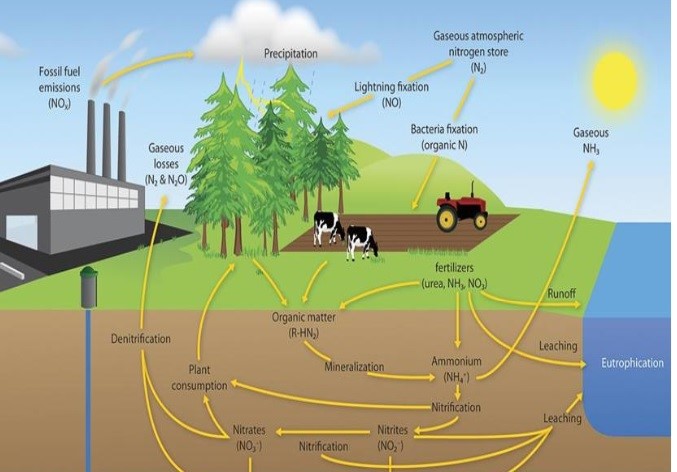
- India ranks second globally in nitrous oxide (N2O) emissions after China, contributing 11% of man-made emissions in 2020.
- Mainly from agricultural activities, especially fertiliser usage (like ammonia) and animal manure, accounting for 74% of anthropogenic N2O emissions.
- N2O concentration in the atmosphere has risen significantly, 25% above pre-industrial levels, with growth rates accelerating since 2020.
- While carbon dioxide levels are much higher (417 ppm in 2022), N2O’s potent greenhouse effect and its longevity in the atmosphere demand urgent attention.
- N2O emissions contribute 6.4% to global greenhouse gas radiative forcing, adding approximately 0.1°C to current global warming.
Implications and Urgency:
- Urgent need for India to revise agricultural practices and cropping systems to reduce N2O emissions.
- Scientists emphasise the importance of addressing N2O alongside CO2 to effectively mitigate climate change.
- Recent data calls for heightened global awareness and action on reducing N2O emissions to limit its impact on climate.
| Impact of nitrous oxide (N2O) emissions: |
|
| PYQ: Mumbai, Delhi and Kolkata are the three megacities of the country but the air pollution is a much more serious problem in Delhi as compared to the other two. Why is this so? (200 words/12.5m) (UPSC CSE (M) GS-1 2015) |
| Practice Question: Discuss the environmental and health impacts of nitrous oxide (N2O) emissions, highlighting its significance in global climate change mitigation efforts. How can agricultural practices be reformed to reduce N2O emissions effectively? (250 Words /15 marks) |
2. Four new studies report progress towards long-awaited HIV vaccine
(Source – The Hindu, International Edition – Page No. – 7)
| Topic: GS2 – Social Justice – Health GS3 – Science and Technology |
| Context |
|
Analysis of the news:
- In early 1981, Dr. Michael Gottlieb reported five cases of pneumocystis pneumonia in patients displaying immunological abnormalities, marking the first recognized cases of AIDS.
- Despite decades of research, HIV, the virus causing AIDS, remains without a vaccine or cure due to its high mutation rate, resulting in a vast array of viral variants.
- Vaccines typically induce antibody production against specific viral proteins, neutralising the virus upon infection.
- However, HIV’s diversity poses a unique challenge as it rapidly evolves to evade immune responses.
- Broadly neutralising antibodies (bNAbs) that can target multiple HIV strains have shown promise. These antibodies are rare and typically take years to develop naturally in infected individuals.
| What are Broadly neutralising antibodies (bNAbs)? |
|
- Recent advances in vaccine development, specifically using nanoparticle-based candidates like N332-GT5 and eOD-GT8, aim to stimulate B-cells to produce bNAbs more effectively.
- These vaccines have shown efficacy in mouse and macaque models, encouraging phase-1 clinical trials in humans to assess safety and immune response.
- A protein fragment known as g28v2 has shown potential in guiding B-cells towards producing bNAbs, representing progress towards a functional HIV vaccine.
- Despite optimism, challenges remain, including the translation of animal study results to human efficacy and the virus’s ability to mutate continually.
- Lessons learned from HIV research are valuable for tackling other RNA viruses such as influenza and coronaviruses, emphasising cautious optimism in vaccine development efforts.
| Practice Question: Discuss the challenges and strategies for combating the HIV epidemic in India, highlighting the role of public health interventions and advancements in medical research. Also, assess the impact of socio-economic factors on the spread and management of HIV/AIDS in the country. (150 Words /10 marks) |
3. India Detects Second Human Case of H9N2 Bird Flu
(Source: Indian Express; Section: Express Network; Page: 09)
|
Topic: GS3 – Science & Technology |
| Context: |
|
Analysis of News:
What is H5B1 Bird Flu?
Background:
- Avian influenza A(H5N1) or H5B1 Bird Flu is a highly pathogenic virus that primarily circulates among birds but can infect mammals.
- H5N1 originated from a virus outbreak in China in 1996 and rapidly evolved into a highly pathogenic strain.
- Since 2020, it has spread across Europe, Africa, Asia, North America, South America, and even mainland Antarctica.
- India experienced the first H5N1 outbreak in the State of Maharashtra and Gujarat in 2015.
Source and Transmission Concerns:
- The Union Health Ministry official noted that no further infections have occurred since the case was detected.
- The primary concern with bird flu arises when it begins to transmit from human to human.
- In this instance, the child was likely exposed to the virus through contact with poultry at home and in surrounding areas, rather than through human transmission.
WHO Risk Assessment and Case Details:
- According to a recent WHO report, the child was first taken to a pediatrician and then admitted to a local hospital’s ICU due to severe symptoms.
- A swab sample confirmed the presence of the H9N2 virus, leading to the patient’s discharge with oxygen support by May 1.
- The WHO expects sporadic human cases of bird flu in India, primarily due to ongoing virus circulation in poultry populations.
- Most human infections with H9N2 are mild, though severe cases requiring hospitalization, like the one in West Bengal, have been recorded.
Global Context and Increasing Concerns:
- Globally, H9N2 human infections are generally mild, with only two deaths reported.
- However, increased focus on bird flu has emerged, especially after three U.S. cases of highly pathogenic avian influenza A (H5N1).
- These cases involved dairy farm workers, likely infected by cows, highlighting the virus’s growing host versatility.
Expert Opinions on Avian Influenza:
- Experts from the National Institute of One Health, emphasized the significance of detecting the pathogen in cows in the U.S., which shows the virus’s ability to infect new animal hosts.
- They noted that various avian influenza subtypes are monitored by a network of laboratories, with not all being dangerous, though global deaths due to the infection have occurred.
Preventive Measures and Guidelines:
- To prevent avian flu infection, WHO guidelines recommend minimizing contact with animals, poultry, and contaminated environments.
- Hand hygiene with soap and water is crucial, particularly before and after handling animals.
- High-risk groups, including children, older adults, and pregnant women, should avoid activities like slaughtering, collecting eggs, or preparing poultry, to reduce the risk of severe disease.
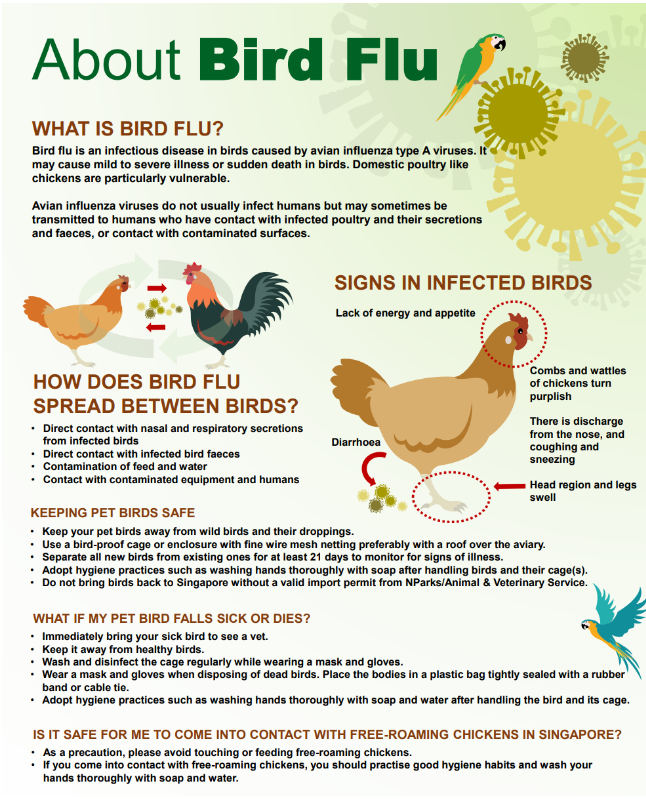
|
PYQ: H1N1 virus is sometimes mentioned in the news with reference to which one of the following diseases? (2015) (a) AIDS Ans: (d) |
| Practice Question: Discuss the implications of detecting human cases of H9N2 bird flu in India. What are the potential risks associated with such infections, and what preventive measures can be taken to mitigate these risks? (250 words/15 m) |
4. Karnataka, Maharashtra, and Goa Seek Reduction in Eco-Sensitive Areas in Western Ghats Amid Development Concerns
(Source: Indian Express; Section: Express Network; Page: 09)
| Topic: GS3 – Environment |
| Context: |
|
Analysis of News:
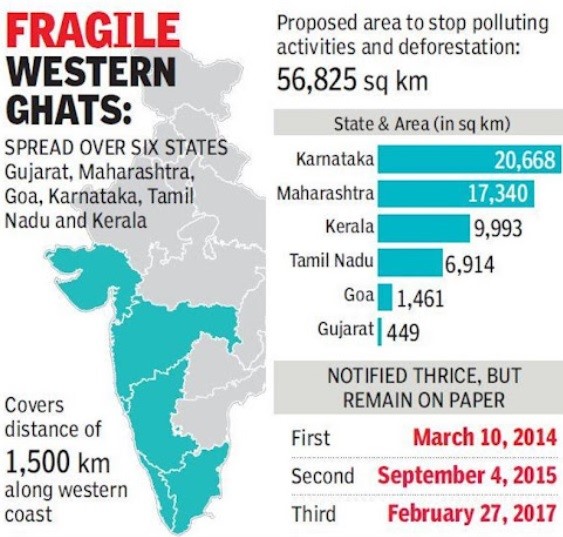
States’ Demand for Rationalization:
Karnataka’s Opposition
- Karnataka, which has 20,668 sq km proposed as ESA, has consistently opposed the Kasturirangan panel report that serves as the basis for the ESA proposals.
- The state argues that the livelihoods of people in the region would be adversely affected by these restrictions.
- The Kasturirangan panel had identified 37% of the Western Ghats as ecologically sensitive and recommended prohibiting or regulating certain activities to protect the area’s ecological balance.
Goa’s Demand for Reduction
- Goa has requested a reduction of nearly 370 sq km from the 1,461 sq km designated as ESA. Experts indicated that the reduction has been sought for the Sattari, Canacona, and Ponda talukas.
- This demand underscores the state’s need to balance ecological protection with development needs.
Expert Panel and Stakeholder Consultations:
- The expert panel, led by Sanjay Kumar and including members from the Indian Institute of Science and the Indian Institute of Remote Sensing, was appointed in July 2022.
- The panel has conducted multiple meetings with officials from the six Western Ghat states, including Gujarat, Maharashtra, Goa, Karnataka, Kerala, and Tamil Nadu.
- They have also sought inputs from various national institutes and agencies such as the Geological Survey of India, National Institute of Hydrology, Forest Survey of India, and Indian Institute of Tropical Meteorology.
Upcoming Report and Environmental Considerations:
- Despite the states’ demands for rationalization, the expert panel is expected to submit its report to the Environment Ministry by September.
- The panel will consider the states’ requests but will adhere to the principles of ecological protection, maintaining a uniform approach to safeguard the Western Ghats.
- The panel’s challenge lies in balancing ecological preservation with the developmental aspirations of the states.
| What is Eco Sensitive Zones? |
|
| PYQ: In which one among the following categories of protected areas in India are local people not allowed to collect and use the biomass? (2012) (a) Biosphere Reserves (b) National Parks (c) Wetlands declared under Ramsar Convention (d) Wildlife Sanctuaries Ans: (b) |
| Practice Question: Discuss the challenges and implications of states’ demands for reduction in eco-sensitive areas (ESAs) in the Western Ghats. How can environmental conservation be balanced with developmental needs in ecologically sensitive regions? (250 words/15 m) |
Prelims Facts
1. Physical Research Laboratory scientists find three new craters on Mars surface
(Source – The Hindu, International Edition – Page No. – 4)
| Context |
|
Analysis of the news:

The new craters Lal, Mursan, and Hilsa on Mars
- Scientists from Ahmedabad’s Physical Research Laboratory (PRL) discovered three new craters on Mars in the Tharsis volcanic region.
- One crater, named “Lal,” honours Devendra Lal, former PRL director, and spans 65 km in diameter.
- Lal crater exhibits geophysical evidence of sedimentary deposits up to 45 metres thick beneath its surface, suggesting past water activity.
- This finding supports the hypothesis that Mars had surface water and potentially a wetter past.
- The second crater, “Mursan,” named after a town in Uttar Pradesh, measures 10 km wide and overlaps the eastern rim of the Lal crater.
- The third crater, “Hilsa,” named after a town in Bihar, also 10 km wide, is on the western side of the Lal crater rim.
- These craters’ locations and characteristics provide insights into Mars’ geological history and the presence of water-driven processes in its past.
- The International Astronomical Union’s Working Group for Planetary System Nomenclature approved the names based on PRL’s recommendations.
2. Lok Sabha session from June 24; new MPs to take oath, elect Speaker
(Source – The Hindu, International Edition – Page No. – 5)
| Context |
|
Election of The Speaker of the Lok Sabha:
- The Speaker of the Lok Sabha is elected by MPs through a voting process during the first session of a new Lok Sabha.
- The election is presided over by the pro-tem Speaker or the senior-most member present.
- MPs propose and second candidates for the Speaker’s position, followed by a vote.
- The candidate who secures a simple majority of votes cast by MPs present and voting is declared elected.
- The Speaker presides over the proceedings of the Lok Sabha, maintains order, and ensures parliamentary rules are followed impartially.
- The position is crucial for the functioning of the House, balancing the interests of the government and opposition.
Oath of Members of Parliament (MPs):
- Members of Parliament (MPs) in India take an oath or affirmation of their membership at the beginning of each new Lok Sabha session.
- The oath is administered by the pro-tem Speaker or another senior member designated by the Speaker.
- MPs solemnly swear to uphold the Constitution of India and to faithfully discharge their duties as members of Parliament.
- The oath includes a pledge to bear true faith and allegiance to the Constitution and to uphold the sovereignty and integrity of India.
- It is a ceremonial and constitutional requirement symbolising the commitment of MPs to their roles as representatives of the people.
3. World will amass ‘major’ oil surplus by ‘30: International Energy Agency
(Source – The Hindu, International Edition – Page No. – 13)
| Context |
| The International Energy Agency (IEA) forecasts a significant surplus in global oil supply by 2030 amid slowing demand growth, attributed to recovery from the pandemic, advances in clean energy adoption, and changing economic dynamics in China. |
Analysis of the news:
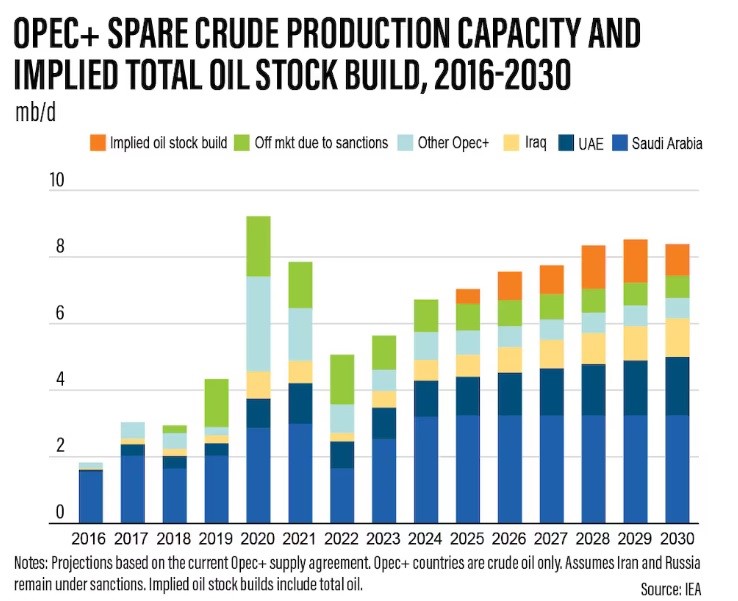
- The International Energy Agency (IEA) predicts a global surplus of oil by 2030 due to increased production and slowing demand growth.
- Global oil demand is expected to stabilise at 106 million barrels per day (bpd) by the end of the decade, while supply capacity could reach 114 million bpd, creating an anticipated surplus of 8 million bpd.
- IEA Executive Director Fatih Birol attributes the slowing demand growth to pandemic recovery plateauing, advancements in clean energy transitions, and changes in China’s economic structure.
- Oil companies are advised to adapt their strategies to accommodate these shifts in the market.
- Despite continued demand from developing Asian nations like China and India, as well as sectors such as aviation and petrochemicals, factors like the rise of electric vehicles, improved fuel efficiency, and reduced oil use in power generation in West Asia will moderate demand growth to approximately 4% by 2030.
| The International Energy Agency (IEA): |
|
3. Satnami Sect Protests Alleged Desecration, Sparking Unrest in Chhattisgarh
| Context: |
|
Analysis of News:
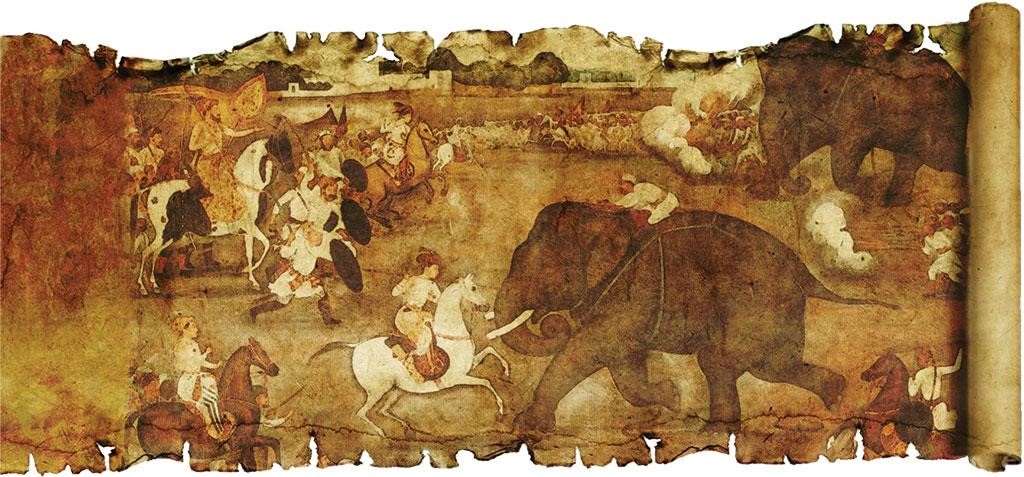
Satnami religious sect
Socio-Religious Background of the Satnami Sect:
- The Satnami religious sect, primarily composed of Scheduled Caste members in Chhattisgarh and adjacent areas of Madhya Pradesh, has a historical lineage dating back to the 18th century.
- Central to their beliefs is the worship of an immanent, formless Absolute referred to as “Satnam,” influenced significantly by the teachings of the 15th-century Bhakti poet Kabir.
- The sect emphasizes rejection of idolatry and caste distinctions, advocating for social equality and spiritual devotion.
Historical Origins and Early Challenges:
- Founded by Birbhan in Narnaul, Haryana, during the Mughal era, the Satnamis initially comprised those engaged in leatherwork, belonging to the “untouchable” caste.
- They gained prominence for their defiance against Mughal tax oppression under Aurangzeb, leading to a significant revolt in Punjab and Haryana in 1672.
- Despite facing severe reprisals, their resistance underscored their commitment to social justice and communal solidarity.


